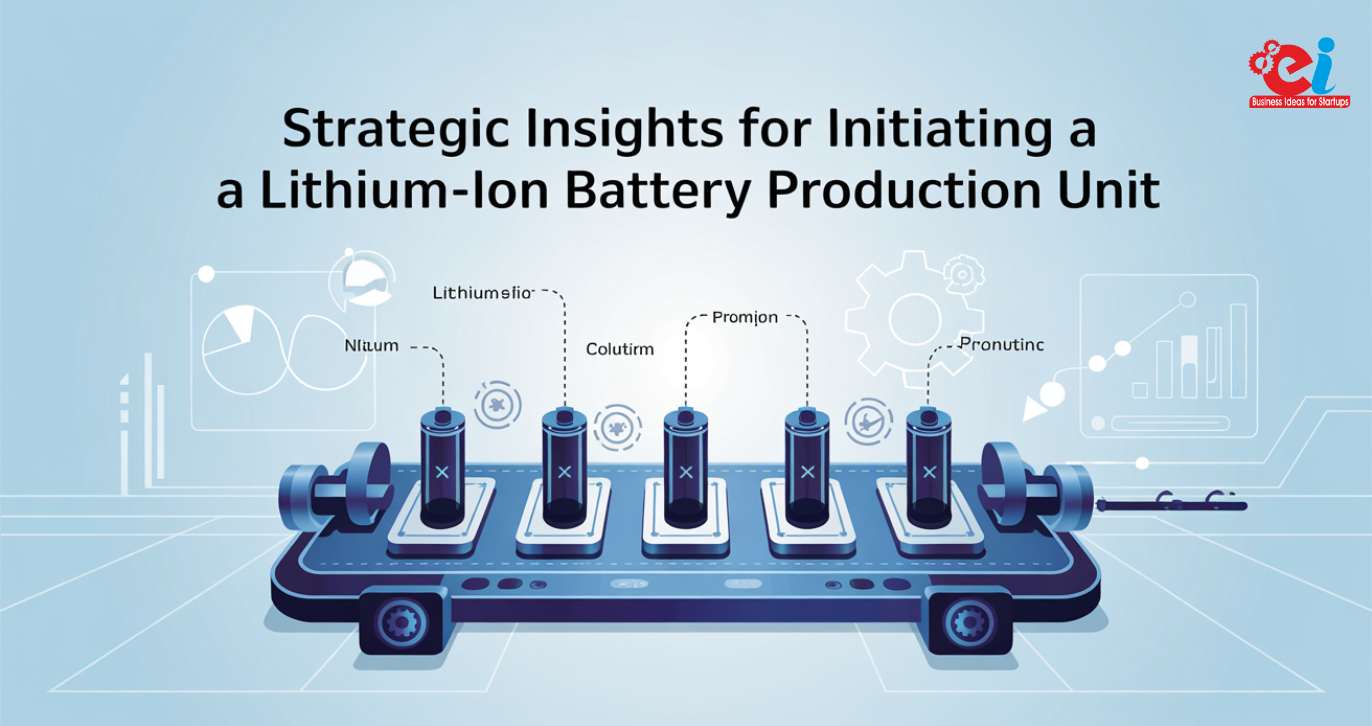The entire production system of lithium-ion batteries has been set to face an important issue as it has had an increase in consumers’ electronics, electric vehicles, and energy storage from renewable sources. Thus, it is installing a plant for lithium-ion battery production, which is good, but as always, it comes with strategic thought, the application of new technology, and compliance. These are some insights to consider for anyone intending to open a production facility for lithium-ion batteries.
Market Analysis and Business Feasibility
1. Understanding Market Demand
The lithium ion will take off globally with its hold from taking the car pieces and making this option a reality for consumers who can now escape rising oil prices and energy demand. Major industries involved, such as automotive, consumer electronics, and grid storage, propel this demand.
2. Competitive Environment
- Look out for household names like Tesla, Panasonic, LG Chem, and CATL.
- Glancing into your rival’s pricing, technology, and strategies in the intended business can help you find a gap in the market.
- Finding niche markets, such as custom battery packs for specific industries, can give you an edge
Read Similar Blogs: Start a Profitable Lead Recovery Business from Scrap Batteries
Legal and Regulatory Compliance
1. Acquisition of Licenses and Permits
- You need to grab the proper permits from the environmental and industrial regulators.
- Be careful about dealing with hazardous materials.
- Check off the approvals for land acquisition, construction, and your manufacturing operations.
2. Safety/Awareness for Environmental Protection
- International safety standards like ISO 9001 and ISO 14001 should be kept.
- Waste management and recycling go a long way toward low environmental footprints.
- This would include good ventilation, protective gear, and fire safety measures for workplace safety.
Infrastructure and Manufacturing Setup
1. Location and Facility Design
- Pick a site that is close to raw materials, has skilled labor, and is near transport.
- Design your facility for maximum production efficiency and growth potential.
2. Equipment and Tech
- Get high-quality machinery into producing electrodes, assembling cells, and producing battery packs.
- Automation and AI-driven quality control will make things speedier and more uniform than non-automated manual production.
- Investigating partnerships with tech providers can help you stay on top of innovations.
Supply Chain and Raw Material Sourcing
1. Major Raw Materials
- Lithium, cobalt, and nickel are important ingredients.
- Trustworthy suppliers are a must for keeping the supply chain viable.
2. Disparities between Local vs. Global Sourcing
A series of various evaluations between local dumping and economically viable sourcing would include possible cooperative agreements with raw material suppliers based on the reduced dependency of market fluctuation.
Production Process and Quality Control
1. Phases of Battery Manufacturing
- Electrode Preparation: Mixing and coating electrode materials.
- Cell assembly: Stacking or winding electrodes and placing them in casings.
- Electrolyte Filling and Sealing: The electrolytes would be injected and sealed.
- Formation and Testing: The newly formed cells would then undergo charging and discharging, as well as acceptance testing for performance.
2. Quality Assurance Measures
- Strict quality checks will be conducted at every stage of production.
- Advanced testing equipment will be used for cell capacity, thermal stability, and lifecycle assessments.
- Safety and performance standards will comply with international regulations.
Financial Planning and Investments
1. Capital Investment and Funding
- Estimate initial setup costs regarding land, equipment, and labor.
- Funding may come from sources such as venture capital, government grants, and bank loans.
- Joint ventures with industry giants for financial and technological support will also be considered.
2. Cost Control Strategies
- Optimize raw material procurement to cut costs.
- Invest in energy-efficient production processes to reduce operational expenses.
- Waste minimization by the application of lean manufacturing principles.
Marketing and Business Development
1. Demography of Target Customers
- EV manufacturers, renewable energy contractors, and consumer electronics manufacturers.
- Government and defense agencies need energy storage solutions.
2. Sales and Distribution Channels
- Create direct partnerships with automotive and electronic manufacturers.
- B2B sales and inquiries with an online presence.
- Take advantage of government initiatives favoring domestic battery production.
Challenges and Risk Management
1. Supply Chain Disruption
- Introduce more suppliers to avoid geopolitical and economic fluctuation risks.
- Maintain buffer stock for critical raw materials.
2. Technological Development
- Be aligned with developments across other allied sectors to gain a competitive advantage.
- Investment for Research and Development, starting from next-generation battery technologies to solid-state battery technologies.
3. Market Competition
- Product delicacy towards exclusivity and an inclusive sustainability mission and credible performance indicator attaches a differentiating factor to it.
- Supporting low-cost production with no compromise on quality.
Closing Remarks
Setting up lithium-ion battery units needs an exhaustive plan bringing together supply chain management, infrastructure and technology planning, market research, compliance, and financial planning. By leveraging government support, maximizing production efficiency, and focusing on innovation, these players are expected to evolve into true giants of the fast-expanding battery market. In so doing, the profit margins and durability of a lithium-ion battery manufacturing project would drop.










